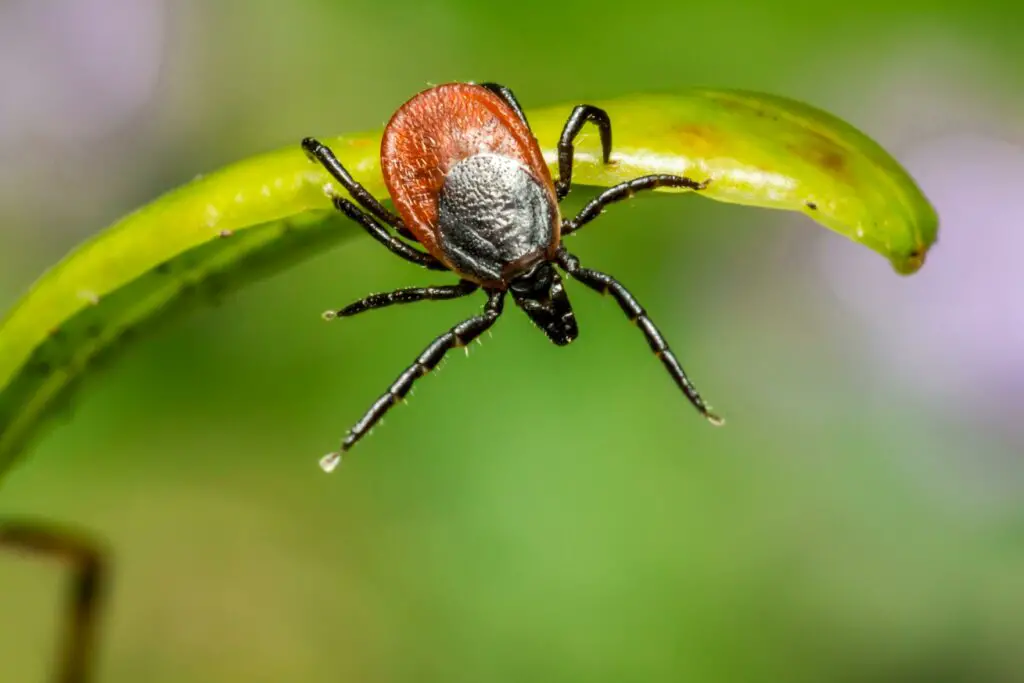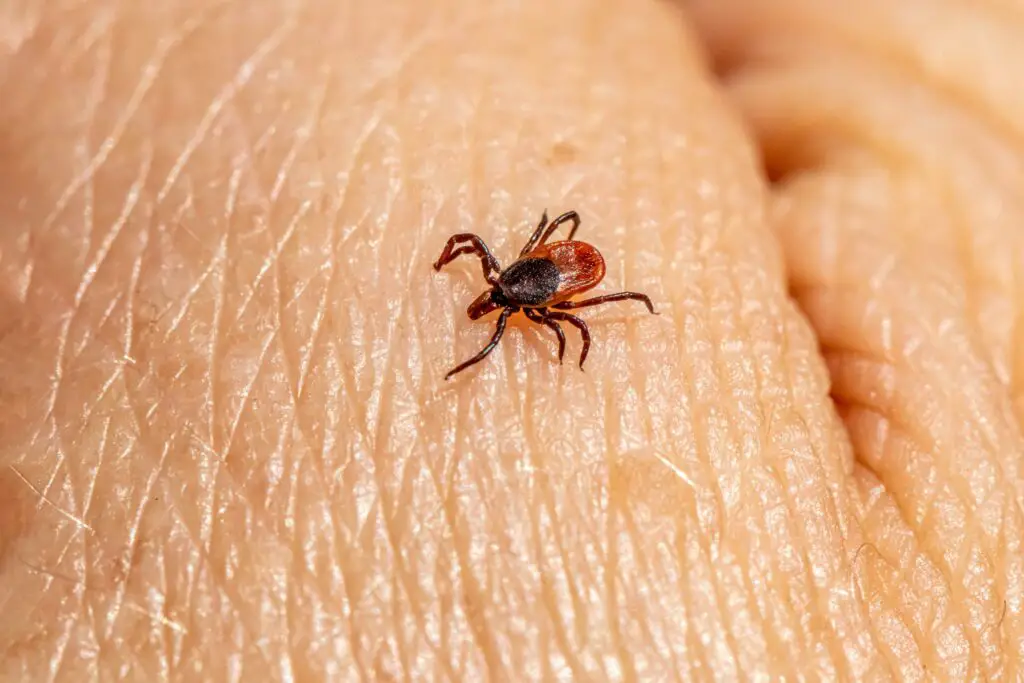Nature is the home to an incredibly versatile array of species, but ticks are definitely one of those that we tend to avoid at all costs.
These tiny arachnids, that are related to spiders, mites, and scorpions, are in fact parasites that survive by attaching themselves to larger animals and feeding on their blood. Humans aren’t spared either. Sadly, these insects carry harmful bacteria that can spread disease to people.
Sadly, tick-borne diseases are at an all-time high, with about 50,000 cases reported each year, and far more going unreported.

There are different types of ticks, and unfortunately, they sometimes find their way to people’s homes. The types most commonly found in homes are the black-legged tick, the dog tick, and the brown dog tick.
- Black-legged Ticks – known as deer ticks, these ticks are typically brown or black in color and have a flattened, oval-shaped body. They are commonly found in wooded areas and can transmit Lyme disease.
- Dog Ticks are larger and can range in color from brown to reddish-brown. They have a tough, shield-shaped body. Dog ticks can transmit diseases such as Rocky Mountain spotted fever.
- Brown Dog Ticks are brown in color and have a slender body.
Although the tick season is between March and October, or sometimes longer, we should be wary of this insects all year round. In fact,if beaten by a tick, a person can develop symptoms even after two or three months.

The bite itself isn’t painful and can cause swelling, itchiness, blistering, and bruising. The bad thing is that ticks also carry and transmit severe diseases, most commonly Lyme disease, as well as Rocky Mountain spotted fever, ehrlichiosis, and babesiosis.
Initially, Lyme disease develops as a circular red ‘bull’s eye’ rash around the site of a tick bite. However, not everyone gets a rash and you should also watch out for a flu-like illness with fever, headache, tiredness and general aches and pains.
The best way to prevent being bitten by a tick is to avoid tall grasses and areas where ticks thrive (such as moorlands and woodlands), especially during the warmer months.
In case you do get bitten, you should remove the tick as soon as possible in order to prevent infections.

These are some of the ways of safe removal.
- Use fine-tipped tweezers: Use clean, fine-tipped tweezers to grasp the tick as close to the skin as possible.
- Pull gently: Apply steady upward pressure, being careful not to squeeze or crush the tick. Aim to remove the tick in one smooth motion without twisting or jerking. Twisting or jerking can cause the tick’s head to break off and stay inside the skin, where it can still transmit disease.
- Clean the area: After removing the tick, clean the affected area with soap and water or an antiseptic solution. Monitor the site of the bite for any signs of infection or a rash, and consult a healthcare professional if necessary.

If by any chance ticks find their way into your home, take immediate action in order to prevent infestation. Most times, ticks are brought into your home in case they stick on your clothes or onto your pets.
- Isolate the area: If you have identified the presence of ticks in a specific area, keep pets and children away from that space.
- Wear protective gear: Put on gloves and a long-sleeved shirt to protect yourself from potential tick bites.
- Clean the area: Clean the area where you found the tick. If it is in bedding, wash the sheets. Inspect the area to ensure there are no more ticks that are present. Dispose of the tick by either flushing it down the toilet or sealing it in a container or ziplock bag before placing it in the trash.
People are seriously struggling to find engagement ring in photo and you’ll need eagle-eyes to see it

In this picture, people are having trouble locating the engagement ring. Are You Able to See It?
Not only can optical illusions be a great method to challenge our minds, but they may also fool and seduce others. A woman recently asked others to help her find her misplaced engagement ring by posting a photo of herself at the beach.
An Odd Picture of a Misplaced Engagement Ring

Find her missing engagement ring among cream, gray, and brown rocks, leaves, and shells from her beach excursion was the latest challenge posted by a Reddit member.More than 1,600 people have commented on the article, many of whom being puzzled Redditors who are unable to find the lost engagement ring.One user said, “It’s the worst when you know it’s dead center and still don’t see it.” Another person, in the meantime, joked, “You know what? No… Locate your own nuptial rings!
One last individual has been duped more than once. “I came here to guess after seeing three things that looked like rings, but after seeing the hint, I realized I was wrong about the first three things,” they wrote.
Locating the Misplaced Engagement Ring

Nevertheless, a few people found the misplaced engagement ring quickly and gave guidance to others on how to do the same.One helpful user advised starting from the middle of the photo whenever possible.”Seek out the little, horizontal stick in the middle. From there, it’s a little to the left and down,” said someone another.A third Redditor said, “Well, it turns out that the ring does actually feature in the image, and to find it, you’re going to have to get your mega zoom on.” “Even though most rocks are the same color, you can find it by zooming in on the area in the center of the image. It’s next to a cream rock that has a leaf under it.”One last person stated, “If there was a chessboard grid in the picture, the object would be at 6B or 5B ish.”
An Alternative Viewpoint Completely

While some people were able to locate the lost engagement ring, others were able to look at the image differently and discovered additional concealed objects.”No ring, but I do see a snake, a toy army man, a socket, and a baby moose,” remarked one individual.They wrote: “It was found, but there was also something else that might have been a little piece of jewelry, or something else, or nothing.” Another individual was questioned.
Reddit Trivia Questions

There is a whole SubReddit on Reddit where users may mislead one another. These optical illusions don’t include a misplaced engagement ring. One Redditor described another optical illusion that is perplexing people as elusive and “shy.” Even though it seems like a simple illusion to solve, it becomes more difficult to locate the curve the longer you stare at it.”The color of the structures conceals the curvature. One commenter pointed out helpfully that they only stand out in your peripheral vision because you see less color, making the green and grey appear more similar, and you see less detail, making the gaps invisible.”I discovered it! That’s correct, though. Give it a minute.It is there, and it isn’t there. Yes, it isn’t it either. Oh nerts!” jokingly said someone else.
Perplexing Circles

You cannot unsee them after you have seen them, according to one user. “Excellent! It took me a minute to realize how this worked after I had been staring at it.One person could not see the circles, though. “I have witnessed this twice, and I still can’t see them. ugh,” they penned.In the interim, the OP made some suggestions. KingBanana advised, “Try looking where the vertical lines are, in between the squares.”
The degree of optical illusions varies, and viewers appear perplexed by the picture of the misplaced engagement ring. It should come as no surprise that there are other optical illusions that have managed to fool individuals. There is an amazing world full of visuals to stimulate and captivate the mind.



Leave a Reply